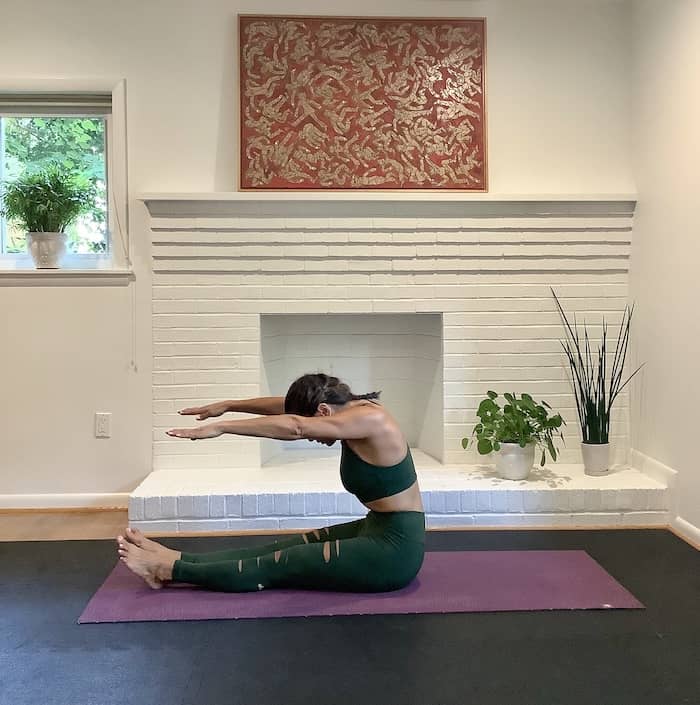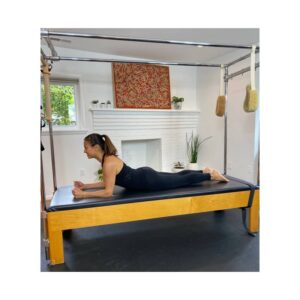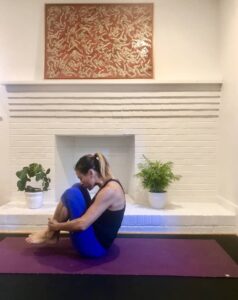Pilates is a workout. It strengthens and tones your body, tightens loose muscles, torches fat, improves posture, and corrects muscle imbalances. Most importantly, to benefit most from Pilates practice, you have to be all in, mentally. Joseph Pilates, Pilates’ founder, focused on the role of movement. Pilates is a no-break, continuous movement exercise—its focus on “flow” differentiates Pilates from other meditative-, stretch-based workouts.
As you progress through a Pilates class, each exercise builds on the previous exercise, flowing into the next one using transition exercises. Your exercises become more challenging—with shorter rest time between each—as the class goes on. As you advance your Pilates workout, you can build up strength and stamina and develop your way towards a chiseled core.
The quintessential, Pilates ab series is a workout for your core. Single leg stretches move into double leg stretches, to scissors, with no rest between exercises. You sweat, breathe, flow and mentally push yourself to the end of the criss cross exercise. My students tell me they are grateful for the final spine stretch forward, which is an active recovery.
This combination of concentration of movement and flow is the hallmark of Pilates. Pilates is, literally, the body-mind workout.
I love explaining the benefits of the workout to my students. You take the feedback from the exercises and use it in your in your daily activities. Our Pilates sessions prepare you for life.
We all need stamina and confidence to be present, whether situations are joyous, stressful, or anything in between. Pilates can attune your practicality to see a situation wholly and honestly. Pilates teaches how to breathe through—whatever is happening—and push yourself. These are critical skills for having the emotional flexibility to ground yourself, then put yourself back together and out in the world.




